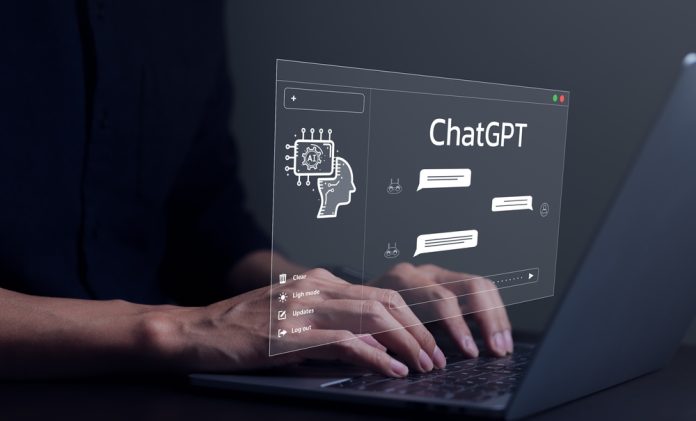
How can something as distinctly non-human as artificial intelligence (AI) – which lacks emotion, empathy, and the capacity to grasp the intricacies of human nature – level up diversity, equity, and inclusion (DEI) training efforts? Well, the short answer is that alone, it can’t. But, when partnered with the power of people, the answer becomes far more intricate.
AI can be a powerful resource when used responsibly, ethically, and in collaboration with subject matter experts. AI can write session plans, analyze survey data, and boost learning accessibility through machine delivery – but we must remember that AI is a resource, not a replacement. Through mindful integration, AI can enrich training design and reduce production timelines, enabling DEI teams to do what they should do best – unlock unparalleled learning experiences.
Facilitating learning in a judgment-free environment
Talented DEI trainers excel at establishing a safe space and devising group activities to boost understanding in what can be potentially challenging and revealing terrain. However, in our working world, it’s common for individuals to fear the judgment of their peers if they were to say the wrong thing.
Thanks to AI-enhanced video and virtual reality (VR) generation platforms, instructional designers can construct interactive scenarios where learners practice inclusive behaviors without the fear of causing harm or feeling exposed. Interfaces that use AI can provide constructive feedback that doesn’t carry the same level of risk or induce the same anxiety as a human response – ultimately leading learners to be more willing to participate, take chances, and show vulnerability.
Representing diversity and revitalizing the learning experience
Using AI-driven avatars allows learning designers to create content that accurately reflects the diversity of their intended audience. This approach enhances the visibility of marginalized groups and nurtures a sense of belonging. Additionally, AI offers greater accessibility through automated captions and language translations – however, it is strongly recommended that you involve a human to verify all automated translations.
Using AI to improve multisensory learning has many benefits, but using ‘synthetic’ humans does come with a cautionary note – especially for homogenous design teams, as they could reinforce stereotypes or distort the views of marginalized groups as a result of their own biases and beliefs. To ensure your representation feels genuine, it’s worth bringing in someone who truly embodies the avatar’s characteristics. This person can authenticate your work – how the avatar looks, moves, and sounds, including the language they speak. This approach gives the avatar a real sense of identity, turning it from a shallow puppet into an authentic representation.
In a similar vein, when it comes to generative learning experiences, be mindful that – despite many AI analysis tools capable of detecting human biases – AI systems learn from training data that could already harbor biased human judgments, historical injustices, and societal imbalances. A recent study with Bloomberg discovered that generative AI tends to favor pale-skinned portraits for senior, higher-paid positions and darker-skinned creations for lower-skilled roles. So, while AI can enhance your text-based case studies into immersive interactive scenarios, be vigilant around automated character generation and challenge what your visuals are truly revealing.
Scalable personalized learning paths with on-demand resources
Despite the significant impact of immersive training design, it is essential to remember the limitations when rolled out as a one-and-done event. The actual challenges of DEI transformation lie in the post-training phase when the working world resumes.
To truly inspire an inclusive working culture, you need to maintain invested interest and follow learning events with well-connected resources. AI has made significant advancements with personalized learning paths – meaning learners can effortlessly get tailored reading recommendations and relevant learning materials by sharing their interests.
It is important to remember that, in the absence of personalized and relevant learning pathways, search becomes the natural go-to for on-demand learning. However, search results often miss the relevance mark due to the bombardment of multiple perspectives, conflicting agendas, and the learner’s inability to distinguish accurate and relevant content from mere noise.
Generative AI, such as ChatGPT, can continuously curate and deliver personalized learning. Content catalog providers are already leveraging generative AI to help employees create personalized learning paths from their existing content – and you can work similarly internally. However, suppose your AI resource isn’t your own trained engine. In that case, it’s important to remember that – although AI will find the material for you – it’s down to your subject matter experts to validate the recommended content and empower learners to take the suggested insights and explore further. AI will provide the source – your learners need to explore the context.
Human + machine = the future of productivity
While this article begins to uncover the very tip of AI’s potential in DEI training, it’s essential to acknowledge that AI-generated content must be evaluated and approved by human experts to ensure accuracy, inclusiveness, and cultural sensitivity. Before you embrace the exciting new world of AI, consider these three guardrails:
- Quality – is it sensible, specific, and interesting?
AI can write anything you ask it to, yet it lacks the human touch and emotional richness that originates from a human creator. The quality checkpoint encourages you to enhance your offerings with that unique personal touch.
- Safety – is it free of bias, hate speech, violence etc?
The safety guardrail reminds us to carefully validate our AI-created content, removing anything that might be harmful or make people feel targeted because of individual characteristics.
- Grounded – is it supported by authoritative sources
The groundedness guardrail encourages us to ensure that our AI creations come from trustworthy and authentic sources.
To expand the scope of your DEI efforts, it’s essential to integrate the synergy between human and AI collaboration skillfully. Leverage the innate abilities of your team members, especially their curiosity, creativity, and critical thinking. But don’t limit your approach to this alone. The unlocking of tomorrow’s workforce lies within your ability to problem solve with AI today.




